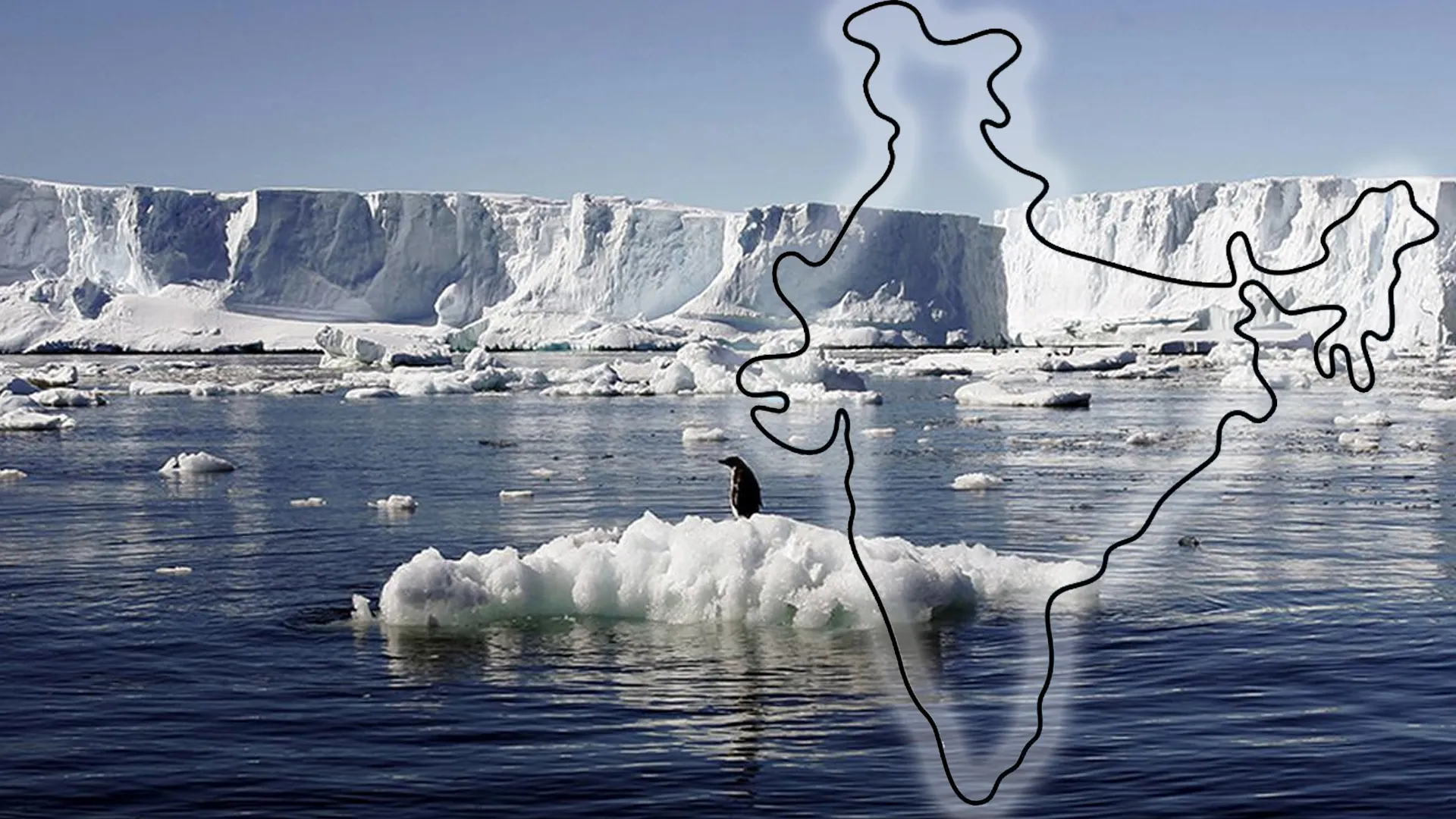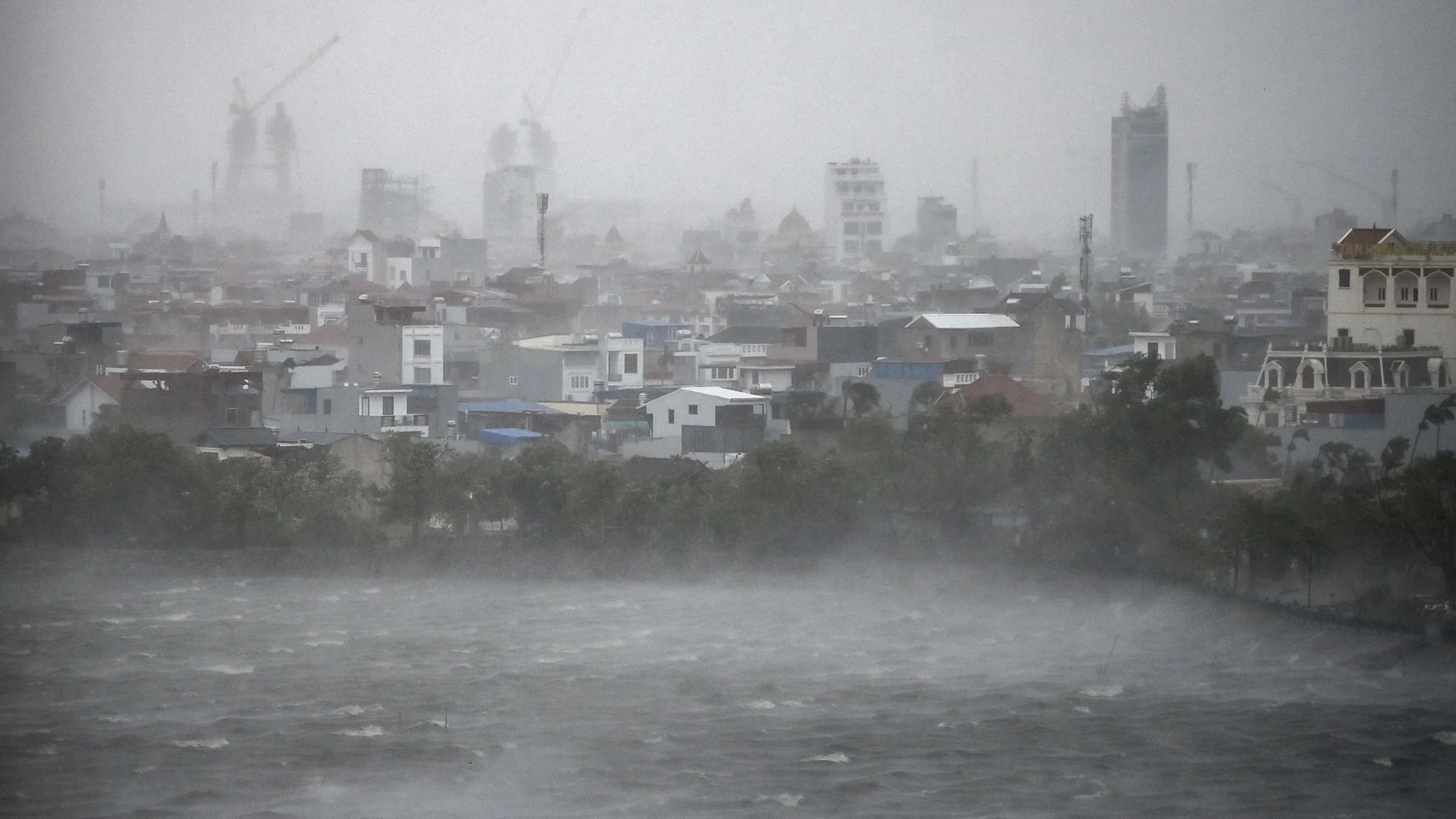Antarctica, the coldest and most isolated of Earth’s continents, might at first blush appear irrelevant to India’s blistering summers or monsoon floods. Yet, scientists now caution that what occurs at the South Pole does not stay there. As the Antarctic ice sheet continues to melt at an alarming rate because of global warming, its ramifications are starting to ripple far beyond the Southern Ocean—reaching into South Asia’s skies and coastlines.
Over the past few years, India has witnessed a growing number of extreme weather events—ranging from catastrophic floods in Himachal Pradesh and Uttarakhand to extended heat waves over the Gangetic plains. Local conditions are at play, but global climate processes are also in operation. Scientists are increasingly looking to Antarctic ice melting as a key, albeit faraway, driver of these changes.
The Accelerating Collapse of Antarctica’s Ice
Antarctica has been losing more ice than it was previously estimated to lose. Scientists have been keeping a watchful eye on glaciers such as the Thwaites Glacier, also referred to as the “Doomsday Glacier,” due to its ability to significantly increase global sea levels. Ice shelves collapsing and glaciers melting are no longer a slow, far-off danger. It’s already in progress.
In 2023 alone, scientists observed a record reduction in Antarctic sea ice cover. Melt from below is caused by warmer ocean currents, while increasing atmospheric temperatures contribute from above. This has deposited gargantuan amounts of freshwater into nearby oceans, upsetting the fine balance that has maintained global climate systems stable for centuries.
Ocean Currents and the Global Climate Engine
The core of this disruption is the thermohaline circulation—a worldwide network of ocean currents that are fueled by thermal (thermo) and salinity (haline) differences. Commonly referred to as the “global ocean conveyor belt,” this circulation has a critical role in distributing heat and modulating weather patterns between continents.
When ice melts off the Antarctic, it unleashes massive amounts of cold, fresh water into the Southern Ocean. That input dilutes salinity and chills ocean surfaces, which influences the density and circulation of water that fuels the thermohaline system. The ripple effects are global, influencing everything from Amazon rainfalls to hurricanes in the Atlantic and monsoons in the Indian subcontinent.
How Antarctica’s Melt Alters Indian Monsoons
India’s monsoon is more than a rainy season; it is the livelihood of more than a billion individuals. From agriculture to water for drinking, from hydroelectricity to urban survival, the South Asian monsoon is the key to India’s economy and society.
This monsoon pattern relies on the sensitive interaction between land temperatures and oceanic phenomena. When ice from the Antarctic melts and disturbs global ocean flows, it further influences how the Indian Ocean has heat distributed to it. In doing so, sea surface temperatures are changed, and these immediately impact monsoon intensity, timing, and location.
A warmer Southern Ocean reduces the Indian Ocean Dipole, an event that levels western and eastern Indian Ocean temperature balances. A Weakened Dipole can translate to weaker monsoons, late rains, or even droughts. In return, it can bring short bursts of heavy rainfall, thereby heightening the risk of flooding.
As polar ice melts, it also plays a role in altering wind patterns and atmospheric circulation. These alterations have a domino effect from the South Pole to the Himalayas.
The Changing Face of Indian Weather
India’s weather has become increasingly erratic over the past decade. Farmers have reported delayed monsoons and unexpected dry spells, while cities have struggled with sudden cloudbursts and waterlogging. Scientists believe these are not isolated incidents but part of a larger, climate-driven transformation.
The Indian Meteorological Department (IMD) has reported increased numbers of localized extreme rain and heat waves in areas not otherwise inclined toward such extremes. Climate research by institutes like IITM Pune and TERI suggests global polar movements and Southern Ocean anomalies as probable contributing factors.
The melting of the poles is no longer merely a story of rising sea levels. It’s altering how winds blow over oceans and where clouds form,” a senior atmospheric scientist at TERI said.
These changes influence monsoon patterns but also modify storm tracks, humidity, and tropical cyclone frequencies. All of these changes arise from disturbances to the planet’s thermal and hydrological balance—an equilibrium in which Antarctica has a silent but fundamental part.
India’s Coastal Vulnerability
While the spotlight tends to be on Himalayan glaciers or the well-being of the Ganges, India’s extensive coastline is also warming up—literally. While polar ice helps raise global sea levels, coastal metropolises such as Mumbai, Chennai, and Kolkata are increasingly threatened by submergence and storm surges.
But aside from rising seas, hotter oceans also bring more powerful storms. Climate change has already brought more frequent and extremely intense cyclones to the Arabian Sea, a rare phenomenon but now growing more frequent.
When ocean equilibrium is disrupted in the poles, the whole world system attempts to rebalance itself. In so doing, the tropical world of India frequently catches the worst effects.
What the Science Says
In line with the Intergovernmental Panel on Climate Change (IPCC), polar regions are at least doubling in warming compared to the rest of the world. The most recent IPCC report issued a warning on the “cascading effects” of polar ice melting, such as changed monsoon patterns, extended drought, and increased flooding in South Asia.
Several Indian researchers and international experts have become part of the appeal to more closely watch Antarctic changes. Satellite observations, ocean buoy networks, and climate simulations are increasingly being employed to plot the potential long-term effects on South Asia.
“India can’t afford to turn a blind eye to melting poles,” explained a researcher at IITM Pune studying climate policy. “The consequences may seem gradual, but they’ll be catastrophic—and permanent.”
Why India Must Watch Now
India is one of the most climate-risky countries in the world. Its reliance on monsoon rains, agricultural livelihoods, and coastal megacities makes it uniquely exposed to the downstream impacts of global warming. Although reduction in emissions is an asymptotic goal, adaptation measures must now encompass a degree of awareness of polar change.
India needs to spend more on climate studies, strengthen its disaster response capabilities, and reformulate its development strategies from a climate-resilient perspective. Knowing why Antarctica influences Indian weather is no longer an intellectual priority—it’s a national imperative.






















